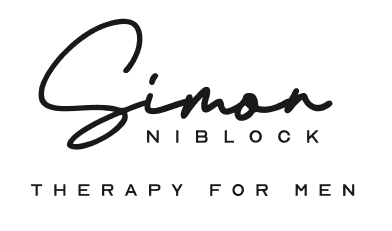Six Tactics to Cope with a Panic Attack
A panic attack is a sudden surge of intense fear or discomfort that reaches a peak within a short period of time (usually within minutes). Sometimes this intense feeling is expected as a response to a particular stimulus, like a phobia, or it can feel like it happens out of the blue and is not attached to a particular trigger.
The experience is different for every person, but all panic attacks fall within one of three panic-related domains:
1 - Unexpected panic attack (no obvious situational trigger or external stimuli)
2 - Situationally bound attack (caused by external triggers such as a phobia)
3 - Situationally predisposed attack (panic that does not occur in all situations)
For more information about the causation of panic attacks, I recommend reading the full article that I published on this subject: Why it Feels Impossible to "Just Calm Down" During a Panic Attack.
The following tactics will help you feel less fearful and resistant during an attack and will make it easier to navigate your way back to calm.
1 - Label the Experience.
During a panic attack, you can create some mental distance from the experience by labeling what is happening to you. Say to yourself, “Yep, this is a panic attack. It really sucks, but I know it will pass and I am not in any danger and it will be over soon.”
2 - Acknowledge and Accept.
First and foremost, don’t tell yourself not to panic—this will only prolong it. Allowing yourself to sit in the swirl of emotions, rather than pushing them away, actually helps the attack to pass more quickly. Remember that you are not your thoughts and you don’t have to “buy-in” to the doomsday story your mind is telling you.
3 - Breathe.
Slow, deep breathing disrupts the panic cycle and calms the autonomic nervous system.
If you’ve already been practicing meditation or breathwork, you may find it easier to turn to the breath during a panic attack. The box breathing method is simple to use and highly effective. Simply inhale to a count of 4, hold for a count of 4, exhale for a count of 4, and then hold for a count of 4. Repeat at least 5 to 6 times.
4 - Shift and focus.
Become really present in the moment and give your attention to the things around you. What do you hear or see or smell? What is the temperature of the air? What is the weather like outside? Noticing your environment helps break the panic cycle by refocusing your thoughts on something new.
5 - Relax your muscles.
Progressive muscle relaxation (PMR) is effective in reducing anxiety. It involves decreasing the tension throughout your body while reducing negative thoughts. This method works better during an attack if you’ve had prior practice. To try PMR, you will intentionally contract and release muscles in different sections of your body. Start by focusing on the muscles in your feet and calves, then thighs and glutes, then abdominals and back, then arms and hand, and finally, neck and face. Remember to breathe deeply as you contract and relax each area in your body.
6 - Collect Data:
Returning to awareness and education, take a moment to evaluate your experience. In addition to identifying your trigger, consider how long the attack lasted and which, if any of the techniques to resolve the attack were helpful. This information is not only beneficial for your own approach to dealing with your panic attacks, but is also valuable information to share with a therapist, should you seek professional help.
Panic attacks are disruptive and emotional events, and while there’s no way to guarantee you’ll never have another one, there’s comfort in knowing they are extremely common and nothing is wrong with you for having them. Building your awareness and coping skills will help you navigate your way to a calmer mindset, minimize the disruption and empower you to live a full and vibrant life
If you or someone you care about is struggling with panic attacks, contact me to schedule a free 30-minute phone consultation. Click on the schedule button below.
Cheers, Simon
Simon G. Niblock, MA, LMFT, is a licensed psychotherapist, specializing in men’s mental health and wellness. He provides tailored psychotherapy services and online programs for men and is the author of the Anxiety Workbook for Men, Evidence-based Exercises to Manage Anxiety, Depression, and Worry.
Important Notice: The content in this article is for informational purposes only. It does not replace direct professional mental health, medical treatment, or professional care in any way. Seek the support of a physician or other qualified healthcare provider to diagnose and treat any mental health concern directly. Contact 911 or your local emergency services number if you are experiencing a mental health emergency.

